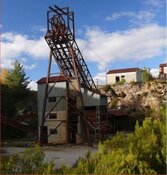Last week, copper's volatility was high. On July 30, two days before it was to go into effect, U.S. President Donald Trump announced that the impending 50% tariff on U.S. copper imports would only apply to semi-finished products such as pipes, wires, rods, sheets, tubes, cables, connectors and electrical components, according to the White House Fact Sheet. More refined goods, including ore, concentrates, mattes, cathodes (the most widely imported form of copper), and anodes, would be exempt.
"While Trump tariffs have disrupted global trade, news of 0% tariffs on copper feels like positive news for U.S. industry," wrote SP Angel, a London broker and investment bank, on Aug. 1. "We expect U.S. manufacturing to look to add production capacity in copper products and copper-intensive goods such as air conditioners. The net overall impact should, in time, be positive for copper consumption as Chinese manufacturers develop new demand in other markets."
Data from the U.S. Department of Commerce, compiled by The Motley Fool, show that last year the U.S. imported 1,800,000 tons of refined copper, mostly from Chile, followed by Canada, Mexico, and Peru, and 633,000 tons (633 Kt) of copper wire and scrap.
Haywood Securities Analyst Pierre Vaillancourt, who called Trump's final call "wise" given the high percentage of U.S. refined copper imports, pointed out in an Aug. 1 Market Commentary report that the decision followed lobbying by the copper industry. Insiders argued that the U.S. lacked sufficient capacity to replace all of its copper imports and that a 50% across-the-board tariff ultimately could hurt economic growth and thereby negatively affect copper prices. In turn, slowing gross domestic product growth and inflation could exert substantial pressure on U.S. mines.
Trump's intention behind the tariff was to address the threat of copper imports to the country's security and revitalize the domestic copper production industry, noted the Fact Sheet.
"The move primarily targets Chinese manufacturers, while Canadian exports remain unaffected," Atrium Research Analyst Ben Pirie wrote in a July Mining Monthly report.
Copper Prices, Equities Fall
In response to Trump's tariff news on July 30, copper prices plummeted. COMEX copper (metals futures contracts on the CME) prices fell a record 22% from US$5.60 per pound (SUS$5.60/lb) at day's end July 29, erasing its roughly 28% premium over the London Metal Exchange (LME), and ended the week at US$4.43/lb, reported Bloomberg News on July 31. LME copper prices dropped 0.8% from US$9,785 per ton (USUS$9,785/ton) on July 29 and ended the week at US$9,630/ton.
Copper equities also fell, producers more than developers, Vaillancourt noted. Among producers, Freeport-McMoRan Inc. (FCX:NYSE) retreated 9.5%, and among developers, Ivanhoe Electric Inc. (IE:TSX; IE:NYSE) lost 15.8%, on July 31.
What caused the price drops was that the final tariff outcome was almost a 180-degree shift from what the market and market participants expected and what was priced into the CME, which was a tariff on U.S. refined copper imports, CNBC reported Albert Mackenzie, copper analyst at Benchmark Mineral Intelligence, as having said. There were speculations that certain countries like Chile, as a major exporter, might be exempted or the tariff start date might be pushed back, but not that refined copper products would remain unlevied.
Since February, when Trump first mentioned the possibility of a copper tariff, COMEX copper prices soared relative to global prices, creating the premium for COMEX futures, reported Reuters on July 31. Traders, anticipating higher domestic prices, sought to get as much of the red metal into the U.S. as possible. Between March and July, they brought in 550 Kt, according to Kpler, reported Reuters. Another reason for the massive copper inflow was because it would take decades for the country to be able to sufficiently increase domestic copper production to meet demand, noted CNBC.
Fast forward to July 8, when Trump announced the 50% tariff, and Aug. 1 was given as its implementation date. He implied the levy would apply to all forms of copper, "from cathodes produced by mines and smelters to wiring and other finished products. The percentage was twice as high as expectations, causing prices to jump again to a new all-time high.
Traders made last-ditch efforts to get even more copper to U.S. ports before the deadline, to take advantage of the copper price arbitrage. Since July 8, 99,170 tons of copper were delivered by bulk carriers to the U.S., per Kpler: U.S. CME warehouses now contain 232,195 tons of copper, the largest quantity since 2004. Macquarie estimated earlier this month, Bloomberg reported, that it would require nine months to consume the copper stockpiled in the U.S. during H1/25. Meanwhile, the rest of the world has been and continues having to deal with the impacts on the supply chain that will take time to readjust.
Expected Tariff Impacts
The U.S. copper tariff will do little to boost the domestic copper mining industry, specifically miners, smelters, and others wanting to invest in domestic production capacity, as purported by The Guardian on July 30. Only two smelters are active in the U.S. to process copper concentrate, Bernstein analyst Bob Brackett wrote in a July 9 note to clients, The Wall Street Journal reported on July 30. Building new ones would cost more than US$5 billion and "take more years than Trump has left in his term."
"The tariff incents no proper economic action but rather simply adds cost to U.S. manufacturers," Brackett added.
This will result in higher prices of consumer goods containing copper, from cookware and electronics to air conditioning units to plumbing fittings, Russ Bukowski, president of manufacturing software company Mastercam, told CNBC.
"To stay afloat, manufacturers may have to pass these costs to consumers, which will likely drive up prices on various goods," he said.
Overall, Bloomberg wrote, the tariff as it is will "roil" global trade of copper, a metal that "plays a crucial role in the world economy thanks to its widespread use in electrical wiring." However, the market should normalize again.
SP Angel described the short-term sentiment toward the copper market as negative.
"The market is wary of traders who may have leveraged positions on physical copper in the U.S. ahead of the tariff announcement," the bank added. "Physical stocks almost always sell at premiums in local market[s], but any traders looking to offload metal in the short term may have to accept losses on the trade."
Deutsche Bank analysts told CNBC the tariff likely will put heavy pressure on COMEX, because of the massive buildup in refined inventories in the U.S. this year, but only light pressure on LME. The overhang could lead to large amounts of copper being returned to the global market from the States.
Goldman Sachs told Bloomberg it does not see significant re-exports happening due to the potential for an import tariff on refined copper in the future should keep U.S. and global prices near parity. As indicated in the July 30 White House Presidential Action, the U.S. Department of Commerce recommended this tariff be imposed starting in 2027 at 15% and increased in 2028 to 30%. The department is to deliver to Trump an update on the U.S. copper market by the end of June 2026, at which time, he said, the decision will be made.
Anant Jatia, Greenland Investment Management's founder and chief investment officer, told Reuters he expects an LME premium over COMEX in the short term because of the massive inventories in the U.S. Then over time, as inventories draw down and downstream tariffs result in a U.S. premium, he anticipates a reversal, to a COMEX premium over LME.
Fundamentals Still Skew Bullish
Copper is a Buy right now, according to Technical Analyst Clive Maund, as it has dropped back into a zone of strong support where it is oversold, he wrote in an Aug. 1 report.
"These tariff antics do not change the overall supply-demand situation for the red metal," Maund asserted.
He explained that after a significant drop, what typically follows is a more limited and measured retreat. Thus, it is likely the copper price will descend a bit more into the strong support zone of US$4–4.20, then "mark out an intermediate base pattern that allows time for sentiment to recover before another uptrend can gain traction," wrote Maund. "Traders can look out for this."
As for copper's fundamentals, supply is in a deficit, reported John Zadeh in a July 11 Discovery Alert article. He quantified current supply growth at 1–2% and current demand growth at 3–4% and cited other factors supporting the copper price. Declining ore grades and boosting production costs throughout the copper mining industry are two. Another is higher capex on new projects, requiring higher sustained prices to rationalize investment.
The supply-demand imbalance cannot be corrected any time soon.
"There aren't enough copper projects in the pipeline — not ones big enough to matter," Lobo Tiggre, CEO of IndependentSpeculator.com, told INN on July 24. "So I'm extremely bullish on copper. All those reasons to be bullish on copper are still on the table in front of us."
Haywood's Vaillancourt also has a positive outlook on copper, but noted the bleaker global economic outlook may temper his view. The International Monetary Fund (IMF) recently lowered its projected global growth rate for 2025 to 3% from 3.3%. For the U.S., the IMF forecasts 1.9% economic growth for this year, down from 2.8% last year. China may be experiencing a similar trend as growth in Q2/25 was down from Q1/25.
Ron Struthers shared his opinion on copper in the Aug. 1 edition of Struthers Resource Stock Report, writing, "In the medium term, I expect prices to move back up to the US$5 area."
| Want to be the first to know about interesting Copper and Base Metals investment ideas? Sign up to receive the FREE Streetwise Reports' newsletter. | Subscribe |
Important Disclosures:
- Doresa Banning wrote this article for Streetwise Reports LLC and provides services to Streetwise Reports as an independent contractor.
- This article does not constitute investment advice and is not a solicitation for any investment. Streetwise Reports does not render general or specific investment advice and the information on Streetwise Reports should not be considered a recommendation to buy or sell any security. Each reader is encouraged to consult with his or her personal financial adviser and perform their own comprehensive investment research. By opening this page, each reader accepts and agrees to Streetwise Reports' terms of use and full legal disclaimer. Streetwise Reports does not endorse or recommend the business, products, services or securities of any company.
For additional disclosures, please click here.








































